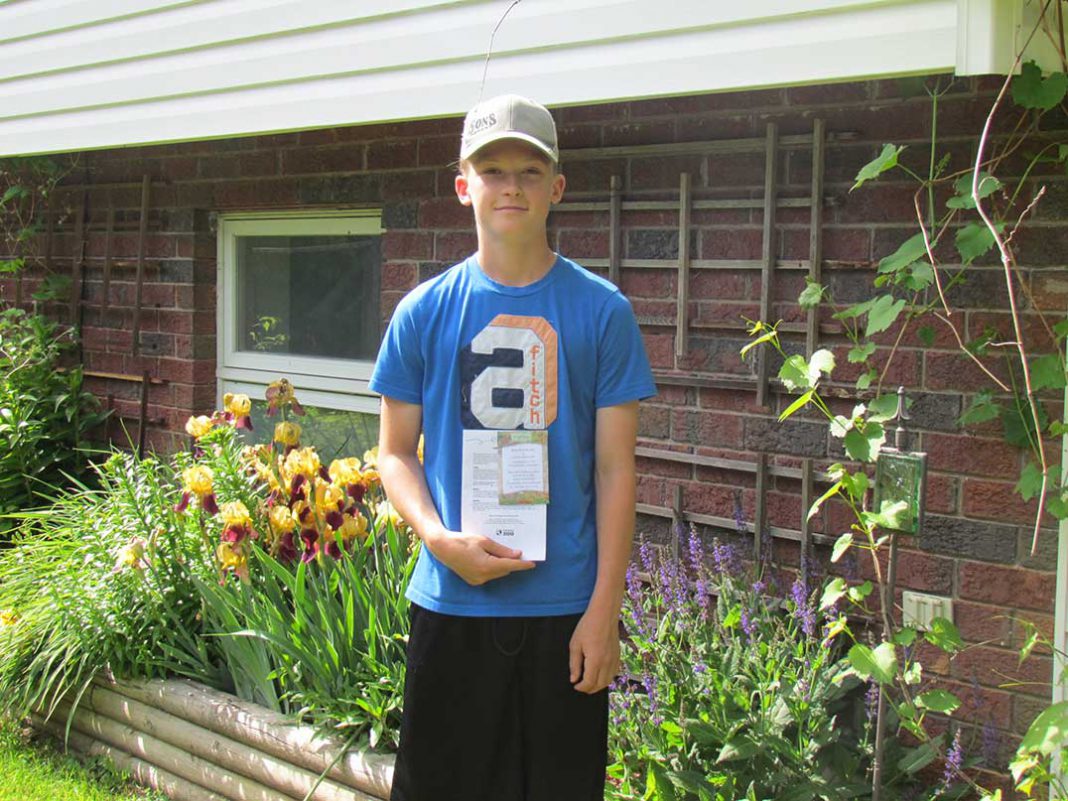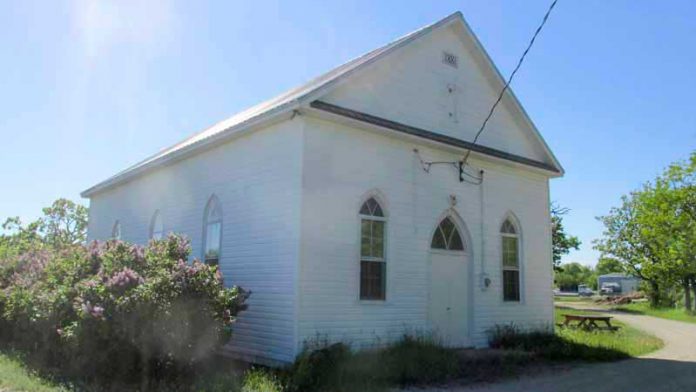MINDEMOYA—Central Manitoulin residents were delighted this week when they opened their mailboxes to see a packet of wildflower seeds and a flyer with information on how to bring back the bees.
Bees have been under assault for many years now, and there have been massive losses of this pollinator. Greenpeace states that insecticides, in particular, pose the most direct risk to bees. Industrial agriculture companies and their use of neonicotinoid pesticides, the Varroa mite, and climate change have all contributed to the decline of bee populations. In May, the European Union voted to ban the use of neonicotinoids.
The flower seeds that residents received is compliments of the Central Manitoulin Beautification Committee, and the container reads “Bring Back the Bees to Central Manitoulin.” Bees need wildflower pollen and nectar to stay happy and healthy, so planting these wildflowers is a fun, easy way to help. As Councillor Pat MacDonald explained, this is a project of the Vesey Seeds Company and the seeds were given out to all residents of the municipality as well as to every student at Central Manitoulin Public School (CMPS). Also, Ms. MacDonald remarked that the school would provide bee facts to the students every morning.
The flyer that was distributed along with the wildflower seeds came courtesy of the Toronto Zoo and was extensive in bee information. There are many different flower seeds in the packet, including lavender, aster, bee plant, coreopsis, cosmos, forget-me-not, coneflower, daisy, poppy, gaillardia, gilia, tidy tips, alyssum, bergamot, baby blue eyes, corn poppy and Ohio spiderwort and the planting procedures were included.
The leaflet also listed several bee facts. These included the point that the bee is the only insect that produces food eaten by humans, that one in three bites of food we eat are made possible by bees and other pollinators who spread pollen that our crops need to grow, and that there are over 20,000 species of bees. Also noted was that bees wings beat incredibly fast at 200 beats per second, that a honey bee can fly for up to 9 kilometres and as fast as 25 kilometres per hour. It was also explained that bees have good colour vision and are attracted to blue, purple, violet, white and yellow flowers.
It may surprise people to learn that not all bees live in hives. The leaflet explains how to provide habitat for these solitary bees. The most important thing is to provide food and wildflowers that are either nectar or pollen-bearing, or both, are critical for sustaining all pollinator populations. These species also need drinking water, and this can be provided by filling a shallow dish with water and small rocks or marbles to ensure a safe place for the bees to land and to drink without drowning. The Toronto Zoo also included ways to provide shelter for bees by creating bee boxes or hotel.
The bee box is made to begin with by sawing the top of a wooden block at roughly a 30-degree angle. Next, drill holes into the wood 2 to 10 millimetres in diameter. Ensure that the holes are sanded so that they don’t damage delicate bee wings. Then, create a roof by gluing a second, thinner, piece of wood onto the slope and then hang the bee box on a fence using a nail, with holes facing east or south for the morning sun.
The bee hotel is made using a 2-litre plastic bottle. Cut the top part of the bottle off and then roll newspaper around a pencil, or use bamboo stems to create a bundle, and then tie them together with string. Pack the bottle with the bundle of tubes, along with sticks, pinecones, and dried leaves for nesting material. Hang the hotel on a tree branch in a sunny spot.
Liam Bridgeman of Mindemoya was one of the CMPS students to receive the wildflower seeds and information sheet. When asked what he thought of this undertaking, Liam replied, “Our area is very beautiful already, but we can always use improvement. I think this project is a good idea and will help the bees.”
Members of the beautification committee include Pat MacDonald, Holly Scott, Bev Webster, Ingrid Blay, Anna Orford, Brenda Eddington, Sandra Hutchinson and Joan Tilston.





